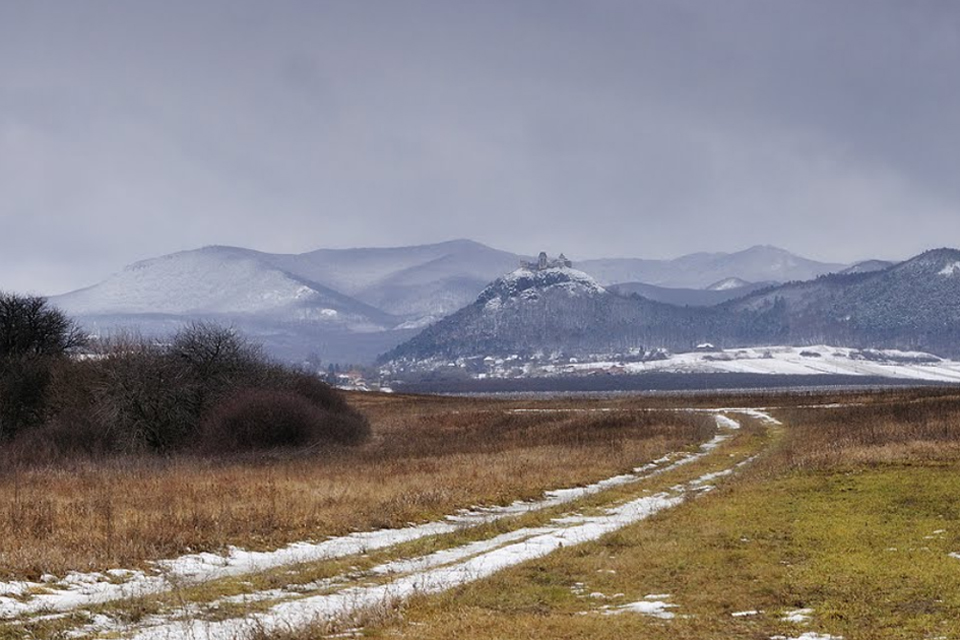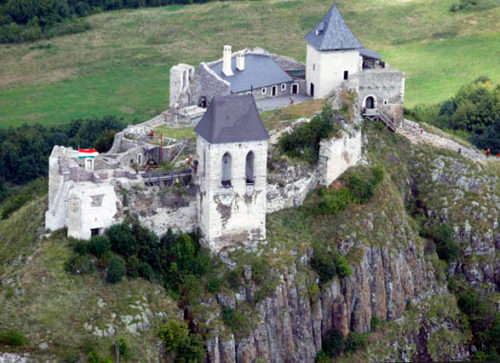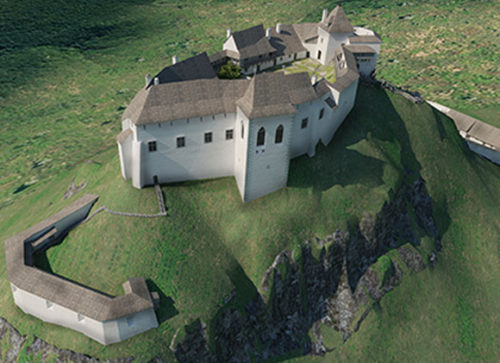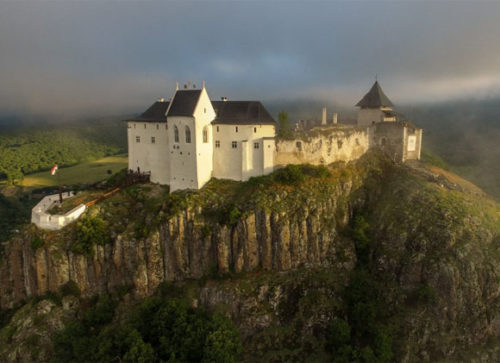Until recently the Castle of Füzér was a dilapidated ruin romantically hovering over a steep rock in north-eastern Hungary on the Slovakian border. Now it has been completely rebuilt. Other castles are waiting in the pipeline to get the same treatment.
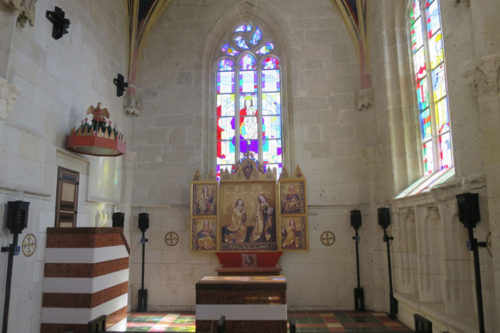
The Füzér castle was first mentioned in 1264, when it belonged to a local clan leader, Andronicus the Blind. It had been built before the Mongol invasion on a step hill reaching more than 550 metres high. After the end of the war, the castle was soon taken over by the king who used it as one of his more important eastern strongholds. Thus, in 1529, the royal insignia were kept there and not at the usual castle, Visegrád.
Around the same time, the castle was heavily and fitted with a tower at the entrance gate, inspired by Italian architecture. In the end of the 17th century it was burned down in order to prevent the castle to be used by rebels and bands of robbers, who had harassed locals in the vicinity. After its destruction, the walls crumbled and the site was pillaged for its building material.
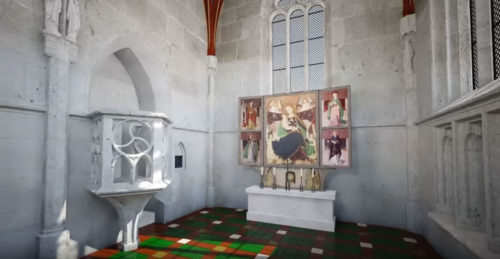
In 1910, the first plan to rebuilt the castle was hatched, but nothing came out of it. In 1977 archaeological excavations were undertaken, which were resumed in 1992. In 2012 planning permission was granted for the full reconstruction.
In 2016 the castle reopened for business with an exhibitions on castles in Hungary, a lapidary, as well as exhibitions on minting, winegrowing and beer production. The aim of the tourism development has been to turn Füzér Castle into a fitting showcase for Hungarian history of the 16th and 17th centuries, illustrating the day-to-day lives of the people who lived there as well as the customs of those times To achieve this, the architectural solutions chosen have been defined by the period, while interior furnishings reflect local crafts. However, the castle is not above trafficking on its “medieval splendour” – with a great hall, and an completely rebuilt chapel fitted with replicas of medieval art – a whole “new” altarpiece – the period chosen for the reconstruction seems to be a mixture. In the village, a craft centre and a local open-air museum tell the story of life in the 19th and 20th centuries.
Other Castles
 Other castles are currently in the pipeline to be resurrected or are already in the process. According to 24HU huge sums are set aside to develop 40 sites. Some of these are listed as part of the National Flagship programme, while others are considered of more local importance. Funding is coming from the national coffers as well as EU money. Different sums are floating around and precise information is difficult to get at but obviously lies in the hundred of millions of Euros. This much is known, Hungary intends to spend huge sums on not only restoring, but in fact reconstructing their medieval castles.
Other castles are currently in the pipeline to be resurrected or are already in the process. According to 24HU huge sums are set aside to develop 40 sites. Some of these are listed as part of the National Flagship programme, while others are considered of more local importance. Funding is coming from the national coffers as well as EU money. Different sums are floating around and precise information is difficult to get at but obviously lies in the hundred of millions of Euros. This much is known, Hungary intends to spend huge sums on not only restoring, but in fact reconstructing their medieval castles.
The whole process is apparently driven by a dedicated group of youngster, who have specialised in creating 3D visuals of Hungarian Castles. The company is called Pazirik Informatikai Kft.
But it is obviously also inspired by the intentions lying behind the initiatives to restore Budapest to its former glory, pre WW1 and WW2.
In this connection it should be noted that the Hungarian government is not only planning to renovate all the castle ruins in Hungaria, but also plans on spending €730.000.000 on the construction of a modern museum park in Budapest, which is intended to be equal to the Museum Island in Berlin. Part of this project includes the renovation of the old royal castle in Budapest, which according to media will be redecorated Versailles; first, though, the plan is to remove the numerous vestiges from the Communist-era’s predilection for brutal architecture.
In the official programme for the National Castle Program – the Nemzeti Várprogram – we can read that the projects have as their stated object to help the Hungarians to “return to their past and roots”.
SOURCE:
Protection of Medieval Monuments – 28.01.2017
By Zsombor Jékely
Programme for a study tour organised by the Association of Hungarian Architects in 2016
For anyone reading Hungarian, a useful overview may be found here in the background information
Reconstruction in 3D of major Hungarian Castles
FEATURED PHOTO:
Füzeri Var before restoration 2012 . Source: Google Map/Laky-981
SEE MORE:
